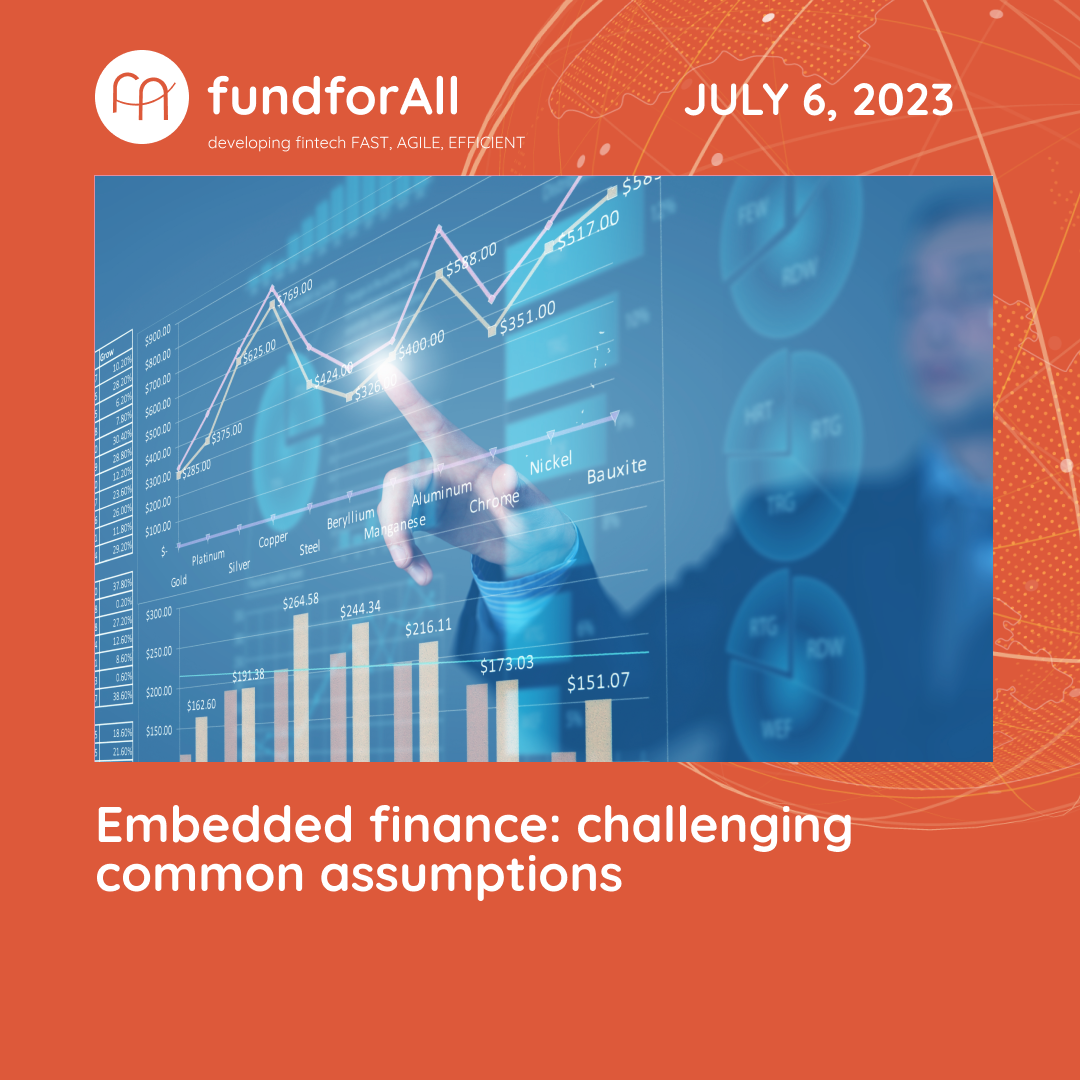
Embedded finance: Banking everywhere and always
An extremely popular opinion of recent years is that “Every company will be a fintech company”.
This phrase is attributed to Angela Strange , general partner of Andreesen Horowitz and was made about 4 years ago. Although Ms. Strange mainly referred to payments and how they can become part of every “digital customer’s” experience, soon the idea began to cover lending, mortgages, insurance, almost anything to do with a banking product that will could be distributed by non-financial organizations.
When this discussion began, the market for so-called fintech, which deals with the use of digital technologies to provide financial services, was expected to reach $50 billion in 2023 and exceed $250 billion by 2030. Ultimately , the first milestone was reached somewhere in 2022 and despite the decrease in investments in fintech, in 2030 it finally seems that the market in question will be over 350 billion dollars with a horizon of 1 trillion. dollars in the coming years , according to McKinsey.
But what is embedded finance ? The provision of banking products and financial services in general by non-financial organizations is very simple. Payments from an online store, provision of insurance products from a clinic, loans from a retail chain and many other applications have already become quite popular, although they are not new. For years, electronics chains have offered installments that are essentially loans, while airlines have offered credit cards. The difference is that all of this goes into a value-added process for all parties involved at all stages, giving the end user a much better experience than today.
The parties involved, in this case, are three: the first is a financial institution that has the necessary banking license. The second is a technology company that offers the necessary technology infrastructure and related solutions and applications. The third is a company, which could also be characterized as a ” distributor “, which is the one that has the relationship with the customer. Theoretically, the role of “third party” can be played by any company, but it seems that in this phase the role is mostly taken by retail chains (physical and digital), telecommunications and energy companies. Others will soon follow, however, mainly from the education and health sectors.
The main added value for the customer is the optimization of the experience as everything becomes easier, faster and basically cheaper. The banks win as they get another distribution channel for their products, much better than themselves. The “distributors” win since their customers are happy as they shop easier and faster but also more targeted, since the data that the “distributors” have from the relationship with them acquires much more value in such a process. Finally, technology companies are getting involved in multi-use infrastructure and applications, a whole new market to develop innovative solutions.
In Greece, embedded finance has started to be the subject of discussion as we see important business agreements and partnerships in this direction. Partnerships that need the support of technology companies, such as FUND4ALL , which are involved in the development and design of applications and infrastructures for embedded finance solutions. Solutions that can be used by businesses of all sizes, even if they are small or medium-sized. After all, that’s the idea, banking everywhere and always.
* Mr. Sokratis Ploussas is the CEO of Fund4all
Visit https://fund4all.gr/ or contact us at info@fund4all.gr




